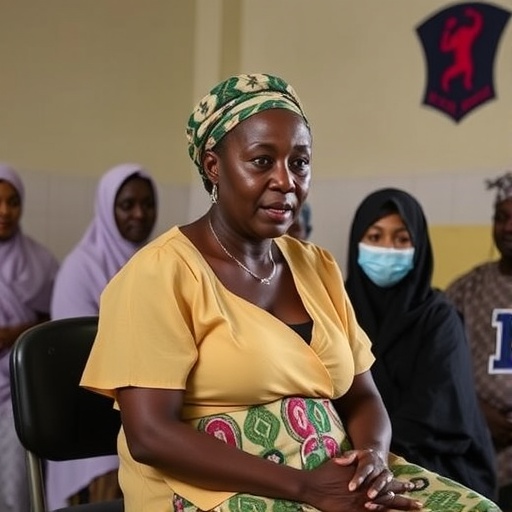Women’s Rights Panel Fills the House at Stillpoint – The Vineyard Gazette

Report on Reproductive Rights Panel: A Sustainable Development Goals Perspective
A panel discussion titled “Our Bodies, Not Yours” was convened to address critical issues in reproductive rights and abortion access. The discussion highlighted significant challenges and strategic responses, directly aligning with several United Nations Sustainable Development Goals (SDGs), particularly SDG 3 (Good Health and Well-being), SDG 5 (Gender Equality), and SDG 10 (Reduced Inequalities).
Panel Composition and Expertise
The event, hosted by Martha’s Vineyard Sexual Wellness (MVSwell), featured a panel of experts actively engaged in advancing reproductive justice. The participants included:
- Nyssa Duarte: Clinic Nurse and Wellness Coordinator for the Wampanoag Tribe of Gay Head (Aquinnah).
- Dr. Maureen Paul: Medical Director for the Massachusetts Medication Abortion Access Project.
- Ndidiamaka Amutah-Onukhaga: Founder and Director of the Center for Black Women’s Maternal Health and Reproductive Justice at Tufts School of Medicine.
- Claire Teylouni: Senior Director at Reproductive Equity Now.
The discussion was moderated by documentary filmmaker and attorney Dawn Porter.
Barriers to Reproductive Health and Their Impact on SDGs
The panel identified numerous legislative and systemic barriers that undermine progress toward key Sustainable Development Goals.
Undermining SDG 3: Good Health and Well-being
Dr. Maureen Paul outlined how legislative actions have eroded reproductive autonomy and directly threaten women’s health, contravening the objectives of SDG 3.
- Historical Context: The 1976 Hyde Amendment, which restricted federal funding, initiated a long-term erosion of access.
- Escalation of Restrictions: Over 1,300 state laws limiting abortion access were passed prior to the 2022 Dobbs v. Jackson Supreme Court decision.
- Direct Health Crises: Dr. Paul cited reports of emergency rooms in states with abortion bans refusing life-saving care to women experiencing miscarriages and other pregnancy complications, leading to preventable deaths from bleeding and infection. This represents a failure to ensure universal access to sexual and reproductive healthcare services (Target 3.7).
- Healthcare System Strain: The criminalization of abortion is causing clinicians to leave states with bans, exacerbating healthcare crises and further weakening health systems.
Exacerbating SDG 10: Reduced Inequalities
The discussion emphasized that the burden of restricted access falls disproportionately on marginalized communities, a direct challenge to SDG 10.
- Racial Disparities: Panelists noted that women of color, particularly Black women, have historically suffered from inadequate maternal healthcare. The current crisis compounds this inequality, worsening the Black maternal mortality rate.
- Indigenous Community Hardships: Nyssa Duarte highlighted the unique challenges for Wampanoag women, for whom off-island travel for procedures creates significant physical, financial, and cultural burdens. The loss of community-based aftercare (support from aunties, sisters, and grandmothers) further isolates individuals and undermines community cohesion.
- Lack of Holistic Care: Ms. Duarte described the mainstream healthcare system as failing to treat patients holistically, a problem that is particularly acute in women’s care and for communities of culture.
Strategic Interventions to Advance Reproductive Justice and SDGs
Panelists detailed state-level and community-led initiatives designed to protect and expand reproductive rights, aligning with SDG 5 (Gender Equality) and SDG 16 (Peace, Justice and Strong Institutions).
Legislative Progress and Institutional Strength (SDG 16)
Massachusetts has enacted key legislation to build a strong, protective institutional framework for reproductive health.
- The SHIELD Law: This 2022 law protects Massachusetts clinicians who prescribe and mail abortion medication (mifepristone and misoprostol) across state lines, ensuring access for individuals in states with restrictive laws.
- The Momnibus Bill: Championed by Ms. Amutah-Onukhaga, this legislative package increases access to midwives and doulas, promoting diverse and culturally competent maternal care options outside of traditional hospital settings.
- State-Level Safeguards: In response to federal challenges against the FDA’s approval of mifepristone, Governor Maura Healy authorized the stockpiling of the medication, securing a nearly two-year supply to ensure continued access for providers in the state.
Promoting Gender Equality and Indigenous Sovereignty (SDG 5)
The panel concluded by connecting reproductive justice to broader goals of gender equality and self-determination.
- Tribal Sovereignty: Ms. Duarte affirmed that as a sovereign nation, the Wampanoag Tribe of Gay Head (Aquinnah) has the right to maintain its own supply of medical abortion pills.
- A Call for “Re-matriation”: Ms. Duarte argued that true reproductive justice requires a return to matriarchal governance and the restoration of land to Indigenous peoples (“re-matriation”). She stated, “You can’t remove people from their land and expect to have better health outcomes,” linking health, gender equality, and land rights as inseparable components of sustainable development.
Identified Sustainable Development Goals (SDGs)
- SDG 3: Good Health and Well-being
- SDG 5: Gender Equality
- SDG 10: Reduced Inequalities
- SDG 16: Peace, Justice and Strong Institutions
Specific SDG Targets Identified in the Article
-
SDG 3: Good Health and Well-being
-
Target 3.1: By 2030, reduce the global maternal mortality ratio.
The article directly addresses this target by highlighting the dangers women face from restrictive abortion laws. Dr. Paul notes that these laws are “actively harming women” and cites a report about “five people who have died… either because of bleeding or of overwhelming infection, because they were turned away from life-saving care.” The article also points to the exacerbation of “the crisis in black maternal mortality” as a consequence of clinicians leaving states with abortion bans.
-
Target 3.7: By 2030, ensure universal access to sexual and reproductive health-care services.
This is the central theme of the article. The entire panel discussion focuses on the movement to “preserve women’s reproductive rights and access to abortions.” The text discusses numerous barriers to access, such as the “1,300 state laws… passed to limit access,” the lack of procedural abortions on Martha’s Vineyard, and the financial and physical burden of travel for care. It also highlights efforts to improve access, like the Massachusetts Medication Abortion Access Project and the SHIELD law allowing for the prescription of abortion pills across state lines.
-
Target 3.8: Achieve universal health coverage, including access to quality essential health-care services and access to safe, effective, quality and affordable essential medicines.
The article discusses the provision of medication abortion using mifepristone, which is described as “proven safe and is largely complication-free.” Efforts to ensure access to this essential medicine are detailed, including Governor Healy’s authorization to “purchase of a stockpile” of mifepristone, ensuring “almost two years’ worth of doses” are available to providers in Massachusetts. The financial burden of travel mentioned by Ms. Duarte also relates to the lack of financial risk protection in healthcare access.
-
Target 3.1: By 2030, reduce the global maternal mortality ratio.
-
SDG 5: Gender Equality
-
Target 5.6: Ensure universal access to sexual and reproductive health and reproductive rights.
The article is fundamentally about this target. The panel discussion, titled “Our Bodies, Not Yours,” focuses on “women’s reproductive autonomy.” Dr. Paul traces the “erosion of women’s reproductive autonomy” back to the 1976 Hyde Amendment and the 2022 Dobbs v. Jackson decision, which “abolished the constitutional right to an abortion.” The entire conversation revolves around the fight to restore and protect these rights.
-
Target 5.a: Undertake reforms to give women equal rights to economic resources, as well as access to ownership and control over land.
This target is specifically invoked by Nyssa Duarte, who connects reproductive justice to land rights for Indigenous women. She states, “re-matriation should be and needs to be the center of reproductive justice — because you can’t remove people from their land and expect to have better health outcomes.” This links control over land directly to women’s health and autonomy.
-
Target 5.6: Ensure universal access to sexual and reproductive health and reproductive rights.
-
SDG 10: Reduced Inequalities
-
Target 10.2: By 2030, empower and promote the social, economic and political inclusion of all, irrespective of race, colour, ethnicity…
The article emphasizes how the lack of reproductive healthcare access disproportionately affects specific groups. It highlights that “Women of color have long suffered from inadequate maternal health care” and that the negative effects of restrictive laws are “compounded for Black women.” The specific hardships for Wampanoag women, who face compounded burdens of travel and separation from community aftercare, are also detailed, showing a clear inequality based on race and ethnicity.
-
Target 10.3: Ensure equal opportunity and reduce inequalities of outcome, including by eliminating discriminatory laws, policies and practices.
The article discusses laws and their discriminatory impact. The “1,300 state laws” limiting abortion access are presented as creating unequal outcomes, particularly for Black women, by “exacerbating the crisis in black maternal mortality.” Conversely, the article highlights legislation designed to promote equality, such as the “Momnibus Bill” in Massachusetts, which “increases access to midwives, doulas and other maternal care,” and the “SHIELD law,” which protects clinicians providing care across state lines.
-
Target 10.2: By 2030, empower and promote the social, economic and political inclusion of all, irrespective of race, colour, ethnicity…
-
SDG 16: Peace, Justice and Strong Institutions
-
Target 16.3: Promote the rule of law at the national and international levels and ensure equal access to justice for all.
The article examines the role of legal and judicial institutions in defining access to healthcare. It points to the Supreme Court’s “Dobbs v. Jackson decision” as a pivotal moment that “abolished the constitutional right to an abortion,” thereby reducing access to justice for women. The discussion of legal challenges to the FDA’s approval of mifepristone and the creation of state-level protective laws like the SHIELD law illustrates the ongoing struggle within the legal system over these rights.
-
Target 16.b: Promote and enforce non-discriminatory laws and policies for sustainable development.
This target is addressed by contrasting discriminatory and non-discriminatory policies. The state laws criminalizing abortion are shown to be discriminatory in their effect, especially on women of color. In contrast, the article presents Massachusetts’ “SHIELD law” and “Momnibus Bill” as examples of proactive, non-discriminatory policies designed to protect and expand healthcare access and equity, thereby promoting sustainable development goals related to health and equality.
-
Target 16.3: Promote the rule of law at the national and international levels and ensure equal access to justice for all.
Implied and Mentioned Indicators for Measuring Progress
-
For SDG 3 (Good Health and Well-being)
- Maternal mortality ratio (Indicator 3.1.1): The article provides a direct, albeit tragic, indicator by mentioning “five people who have died” from being denied care. It also refers to the “crisis in black maternal mortality,” implying that this ratio is a key metric of the problem, especially racial disparities within it.
- Number of laws and regulations guaranteeing access to sexual and reproductive health care (related to Indicator 3.7.2): The article explicitly counts “more than 1,300 state laws… passed to limit access” and names specific federal and state legislation (Hyde Amendment, Dobbs decision, SHIELD law, Momnibus Bill). The number and nature of these laws serve as a direct indicator of the legal framework for access.
- Proportion of population with access to affordable essential medicines (Indicator 3.b.3): Progress can be measured by the availability of mifepristone. The article states that Massachusetts has stockpiled “almost two years’ worth of doses,” which is a quantifiable indicator of secured access to this essential medicine.
-
For SDG 5 (Gender Equality)
- Existence of laws and regulations that guarantee full and equal access to women to sexual and reproductive health care (Indicator 5.6.1): The legal landscape described in the article serves as the primary indicator. The removal of a constitutional right via the Dobbs decision indicates a regression, while the passing of the Massachusetts SHIELD law indicates progress at the state level.
-
For SDG 10 (Reduced Inequalities)
- Proportion of population reporting having personally felt discriminated against (Indicator 10.3.1): The testimonies from Ms. Duarte and Ms. Amutah-Onukhaga serve as qualitative indicators of discrimination. Ms. Duarte describes the mainstream healthcare system as “soul-sucking” due to the “lack of holistically-treated patients,” particularly for communities of culture. This personal reporting highlights the presence of discrimination.
- Reduction in inequalities of outcome: The article points to the “crisis in black maternal mortality” as a key indicator of an inequality of outcome that is being exacerbated by restrictive laws. Measuring changes in the maternal mortality gap between Black women and other groups would be a direct way to track progress on this issue.
Summary of SDGs, Targets, and Indicators
| SDGs | Targets | Indicators |
|---|---|---|
| SDG 3: Good Health and Well-being |
3.1: Reduce maternal mortality.
3.7: Ensure universal access to sexual and reproductive health-care services. 3.8: Achieve universal health coverage and access to essential medicines. |
– Number of deaths from lack of life-saving pregnancy care (“five people who have died”). – Disparity in maternal mortality rates (“crisis in black maternal mortality”). – Number of laws restricting/protecting access to abortion (“1,300 state laws,” “SHIELD law”). – Availability of essential medicines (stockpile of “almost two years’ worth of doses of mifepristone”). |
| SDG 5: Gender Equality |
5.6: Ensure universal access to sexual and reproductive health and reproductive rights.
5.a: Give women equal rights to economic resources and control over land. |
– Legal status of reproductive rights (abolition of constitutional right by “Dobbs v. Jackson”). – Call for “re-matriation” and restoration of land as central to reproductive justice for Indigenous women. |
| SDG 10: Reduced Inequalities |
10.2: Empower and promote the inclusion of all, irrespective of race or ethnicity.
10.3: Ensure equal opportunity and reduce inequalities of outcome. |
– Disproportionate impact of laws on specific groups (“compounded for Black women,” hardships for Wampanoags). – Testimonies of discrimination in healthcare (“lack of holistically-treated patients”). – Existence of discriminatory laws (state abortion bans) vs. protective laws (“Momnibus Bill”). |
| SDG 16: Peace, Justice and Strong Institutions |
16.3: Promote the rule of law and ensure equal access to justice.
16.b: Promote and enforce non-discriminatory laws and policies. |
– Impact of judicial decisions on rights (“Dobbs v. Jackson decision”). – Enactment of protective state laws (“SHIELD law”) vs. restrictive state laws. |
Source: vineyardgazette.com

What is Your Reaction?
 Like
0
Like
0
 Dislike
0
Dislike
0
 Love
0
Love
0
 Funny
0
Funny
0
 Angry
0
Angry
0
 Sad
0
Sad
0
 Wow
0
Wow
0
























;Resize=805#)
























































